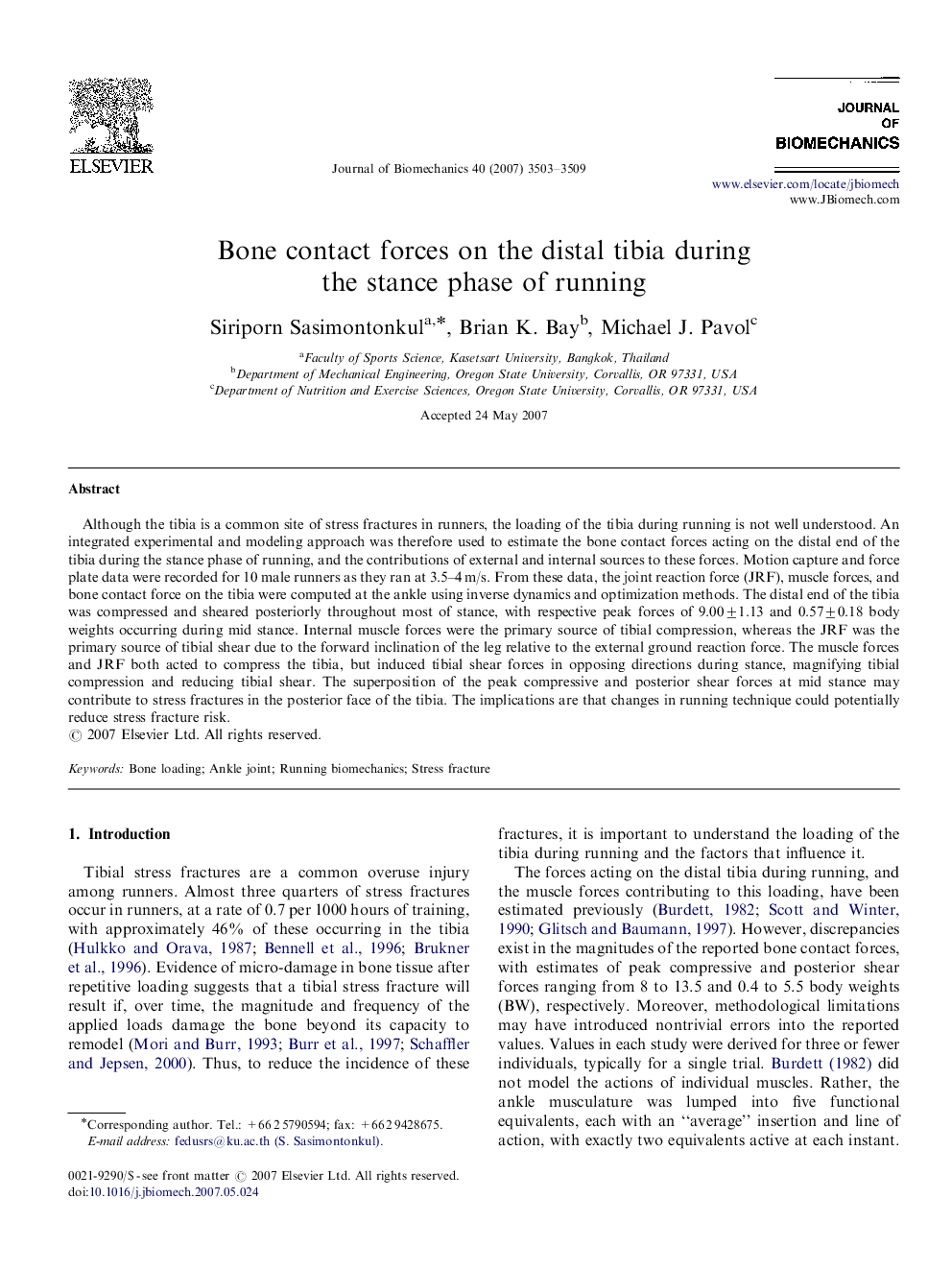| Article ID | Journal | Published Year | Pages | File Type |
|---|---|---|---|---|
| 874223 | Journal of Biomechanics | 2007 | 7 Pages |
Although the tibia is a common site of stress fractures in runners, the loading of the tibia during running is not well understood. An integrated experimental and modeling approach was therefore used to estimate the bone contact forces acting on the distal end of the tibia during the stance phase of running, and the contributions of external and internal sources to these forces. Motion capture and force plate data were recorded for 10 male runners as they ran at 3.5–4 m/s. From these data, the joint reaction force (JRF), muscle forces, and bone contact force on the tibia were computed at the ankle using inverse dynamics and optimization methods. The distal end of the tibia was compressed and sheared posteriorly throughout most of stance, with respective peak forces of 9.00±1.13 and 0.57±0.18 body weights occurring during mid stance. Internal muscle forces were the primary source of tibial compression, whereas the JRF was the primary source of tibial shear due to the forward inclination of the leg relative to the external ground reaction force. The muscle forces and JRF both acted to compress the tibia, but induced tibial shear forces in opposing directions during stance, magnifying tibial compression and reducing tibial shear. The superposition of the peak compressive and posterior shear forces at mid stance may contribute to stress fractures in the posterior face of the tibia. The implications are that changes in running technique could potentially reduce stress fracture risk.
